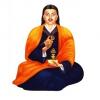Search the Community
Showing results for tags 'tsa lung'.
Found 4 results
-
Hello, There are already some topics similar to this one, and I have read them, but still I felt that my questions weren't answered, so I decided to register on the forum and ask them myself. Originally I planned to send it as a DM to @steve, but I decided to post it openly, so anyone else that has experience with both systems can contribute if they wish to do so. That being said, I'd really appreciate your input @steve. I'm a Yungdrung Bon practitioner. My practice, at least when it comes to working with channels and energy, consists of tsa lung exercises from Magyud, Zhang Zhung Nyengyud trul khor and tummo from Ku Sum Rang Shar (for now the general and special preliminaries only). Recently I have begun to dabble a bit in qigong, with some local instructor and their teacher that visits us from time to time. We seem to do mostly alignment stuff for now, opening the kua, wall squats and the like, as well as some basic forms. Even at that really basic level my qigong practice really enhanced my body, my energy levels and general well-being, in a way that my Tibetan yoga practice didn't seem to address. I get many benefits from doing yoga of course, but it just has a different feel and effect upon my mind and body. I'd describe it like using different sets of muscles, metaphorically speaking. I want to continue my qigong practice, as I found it rewarding and complementary to my other endeavours, but I'm worried it can cause some problems down the line. I've read the injunctions against mixing systems from both traditions, so understandably that is concerning to me, as of course I will continue on the path of Tibetan yoga. From your point of view - practitioners that have practiced in both traditions - can they be mixed safely or not? (by mixing I don't mean doing them in one session, but for example qigong one day, yoga the other, or qigong in the evening and yoga in the morning etc.) If so - what is the qigong system that you would recommend for someone like me? I was thinking about the Zhineng Qigong (simply because of the availability of online teachings), but I read that the teacher advised against mixing it with other qigong system, not to mention other traditions. Secondly, do you think that the Tibetan approach is lacking in certain respects? I don't mean to offend anyone, or the teachings. I consider myself a dedicated practitioner, I've taken refuge vows, but I can't help but wonder that the Tibetan systems are forceful and fiery to the extreme, pure yang, while the Daoist systems seem more balanced. At least that is my limited, entry-level understanding, as I am an expert in neither. I'd appraciate any guidance I can get, and thanks for getting through this long post _/\_
-
The Bon Tradition is a very rich tradition who's practices I find great value in, for those of you who practice in the Bon tradition which are your favorite practices and why? I find the following essential and indispensable 1.The nine breaths of purification: This can of course be done for many many rounds and in my experience is very refreshing and does help clear the Lung and the mind and the emotions making them more stable. 2. Tsa Lung: This practice helps circulate the lung in the body and really helps re-energize and clear blockages as well as clear out stagnated lung. This also further clears and calms the mind 3.Guru Yoga: Guru Yoga is such a beautiful loving heart experience and even though I learned of Tapihritsa and Shenla Odkar almost at the same time I favor the connection with Tapihritsa. Tapihritsa resonates best with me as a closely felt heart love connection that brings tears of joy and deep gratitude to my eyes that goes beyond just respect. In this practice Ah, OM, Hung, White, Red & Blue lights connect at Crown, Throat & Heart Chakras. Body, Speech & Mind we connect to the lineage through the guru of the lineage. This to me is very important because the guru introduces us to Buddha so the guru is very important. We connect to the attributes of the guru and not only get purification but our mind via induction aligns and become more like the mind of the guru thereby helping us to perceive the Buddha. I have some experience of tummo described in another thread but find the basic first version I learned to be best as the book learning just added complexity to what I was gifted and without direct teaching not as good. Due to years of Lucid dreaming and it growing ever stronger I have begun learning dream yoga of the Bon Tradition. I welcome a constructive dialogue and am eager to learn from the more experienced in this tradition thank you for taking the time to read these words.
- 11 replies
-
- 6
-

-
Greetings everyone, In honor of Chogyal Namkhai Norbu's upcoming retreat on the pranayamas of Yantra Yoga, I want to say something about this marvelous system, which has benefited me a great deal. In contrast to Indian Yoga, where there is an abundance of information on postures and pranayama exercises available, Tibetan pranayama exercises are not given out to the general public, and to a large extent even the systems of systems of yoga postures are secret. One of the exceptions to this secrecy is Yantra Yoga taught by Chogyal Namkhai Norbu. Yantra Yoga is a Sanskritization of Trul Khor, a "yantra" being a series of movements linked with breathing. In the practice, movement is done on inhales and exhales, and breath retention is done holding a posture. Those who have researched Tibetan breathing practices such as tummo have probably seen that they use a type of breath retention called vase breath. But what exactly is vase breath - how does one do it? Getting clarity on this is not easy. This is where Yantra Yoga comes in: in Yantra a proper vase breath is divided into four steps: open hold, directed hold, closed hold, and contracted hold, which in turn are done on the basis of correct inhalation and exhalation. The mechanics of the movements and poses make your body do these elements correctly (provided you are doing practice with awareness). So you get a very precise felt sensation of what a proper quick inhale, slow inhale, quick exhale, slow exhale, open hold, directed hold, closed hold, contracted hold, and empty hold feel like. You then take this knowledge and apply it to your pranayama practice, so there is no doubt that you are doing it correctly. Brilliant! Different holds are trained by different yoga postures. Backbends such as cobra, locust and bow train open hold; twists train directed hold; inversions such as sholderstand and headstand are poses that train closed hold; and downward dog, fish, and frog are poses that train contracted hold (I am using the standard Hatha Yoga names for the poses here, although they are often similar or the same in the Tibetan system). There is more to the system than that such as various preliminary and closing exercises, but training the different holds using postures is the gist of it. There are many books and DVDs available to learn the system. In my case, I went to yoga classes in my area with good lineage (Iyengar and Ashtanga) in order to learn the poses correctly, and then learned the Yantra Yoga way of linking the poses together with breath from the books and DVDs. So that is the physical aspect of the system. It is very good even if you are just interested in Hatha Yoga because you understand what correct breathing is like, rather than just correct physical alignment, and this plus the dynamics of the different holds opens up a deeper understanding of subtle inner alignments. A lot of things about yoga postures make a lot more sense to me having studied this. Now, about pranayama. There are two preliminary pranayamas which are forms of alternate nostril breathing, and then five main pranayamas of which use vase breath in a major way. The first two of these are more physical and the last three incorporate visualizations of channels and chakras. Chogyal Namkhai Norbu is going to be teaching these pranayamas in his next retreat which will be webcasted (!) for free (!!). He typically spends one or two session of every retreat teaching about Dzogchen generally, and then teaches the practices specific to that retreat, with one session at some point explaining and then giving direct introduction (!!!). These pranayamas are not associated with the cycle of a deity like other Tibetan tsa lung systems, but are directly related with Dzogchen. So if you get the direct introduction and oral explanation, you have permission to practice. And he doesn't teach these particular practices very often. What's more, the books that serve as references for the practices he teaches are only available to members of his organization, the one exception being the book on the complete system of Yantra Yoga, which is publicly available. http://www.amazon.com/Yantra-Yoga-Tibetan-Movement/dp/1559393084/ In other words, this retreat, in addition to the publicly available book, is giving unprecedented access to authentic Tibetan pranayamas connected with Dzogchen. The retreat will be June 3-7, from Tenerife, Spain. The official schedule is not up yet, but typically the session are two hours each, with a 10 am morning session and an afternoon session starting a 3 or 4 pm. http://melong.com/events_listing/spain-tenerife-dzamling-gar-june-3-7-2016/ http://webcast.dzogchen.net/
-
These may be going for a song on the US site too: Secret Teachings of Padmasambhava http://www.wisdom-books.com/ProductDetail.asp?CatNumber=25069 A translation of tantric practices from the great Indian master Padmasambhava, who is credited with establishing Buddhism in Tibet. These advanced Tibetan Buddhist teachings provide instructions for gathering and harnessing basic life energy, especially concerning transforming sexual energy and re-directing the essence of that energy toward spiritual realization - when used skilfully by committed practitioners with appropriate training. Also here are teachings on the fundamental elements that make up our world. The commentary by Dr.Lipman describes how to use these life energies for personal development. These two brief works of Padmasambhava, Fivefold Essential Instruction and a Section of Hidden Instruction: the Innermost Essence of the Dakini, not only present the tantric teachings on the channels (tsa), energy (lung), and potencies (tigle) in a clear and practical way, but they also offer a unique Dzogchen perspective on them. The Fivefold Essential Instruction shows how the five elemental phases of earth, wind, fire, water, and space operate at deeper and deeper levels of reality. The Section of Hidden Instruction, the Innermost Essence of the Dakini, is a more comprehensive treatment of the five phases from a Dzogchen view. Cascading Waterfall of Nectar http://www.wisdom-books.com/ProductDetail.asp?CatNumber=21825 A profound commentary on two important texts on the preliminary practices, or ngondro, informed by Thinley Norbu's understanding of the concerns of Western practitioners. The main commentary is on the well-known Dudjom Tersar Ngondro, a terma revealed by Dudjom Lingpa. Also included is a second commentary, on a short prayer text (Tsogskhang Dechen) written by Dudjom Rinpoche. Together, these two commentaries offer the occasion for Thinley Norbu Rinpoche to impart his powerful insight into various aspects of the Buddhist path from the tantric point of view.




